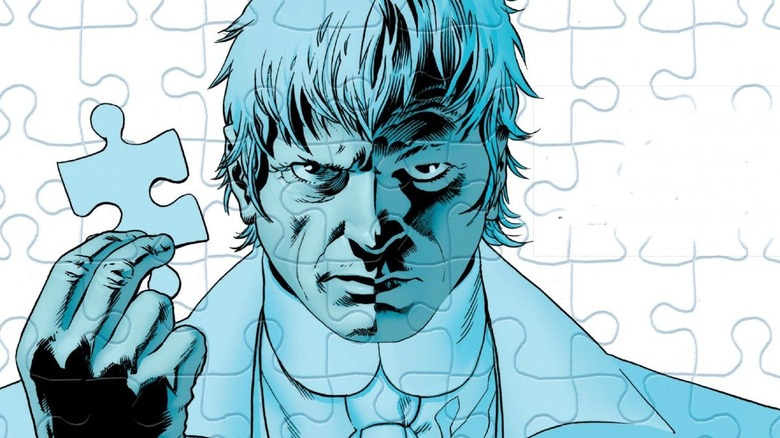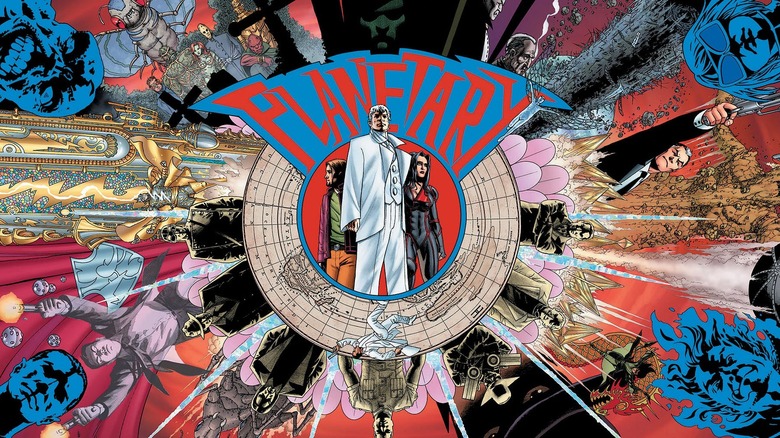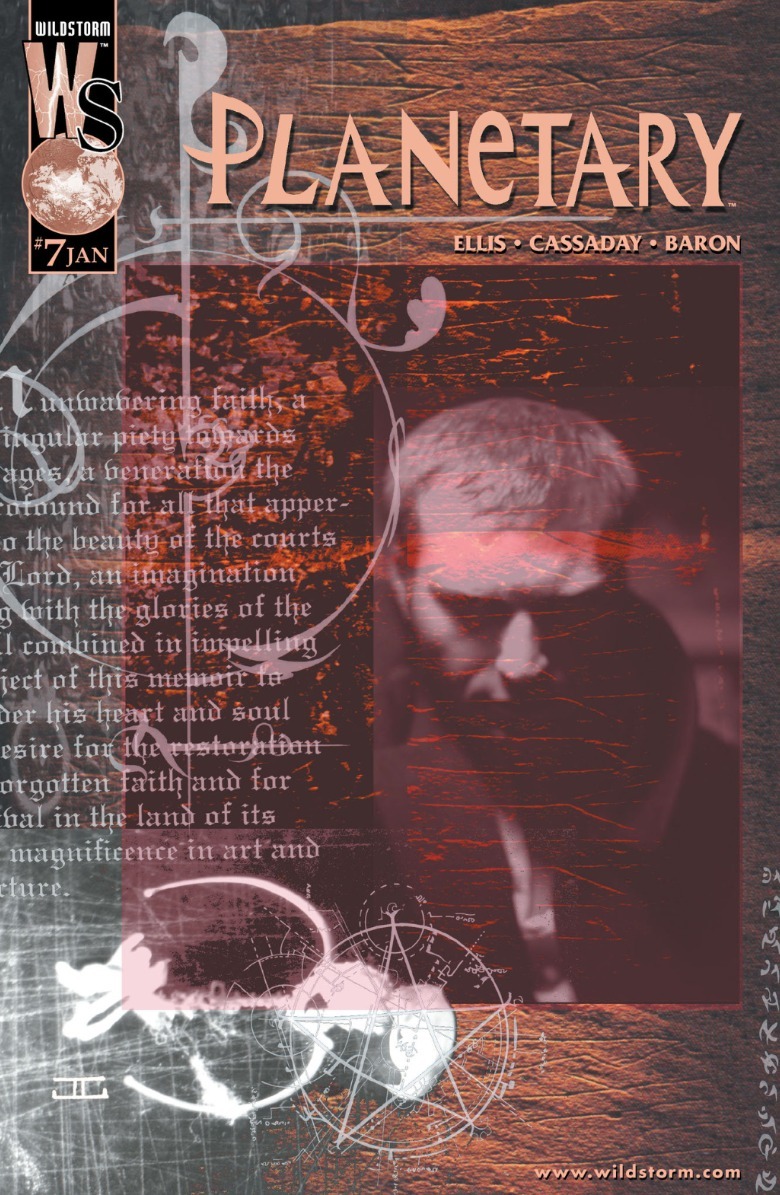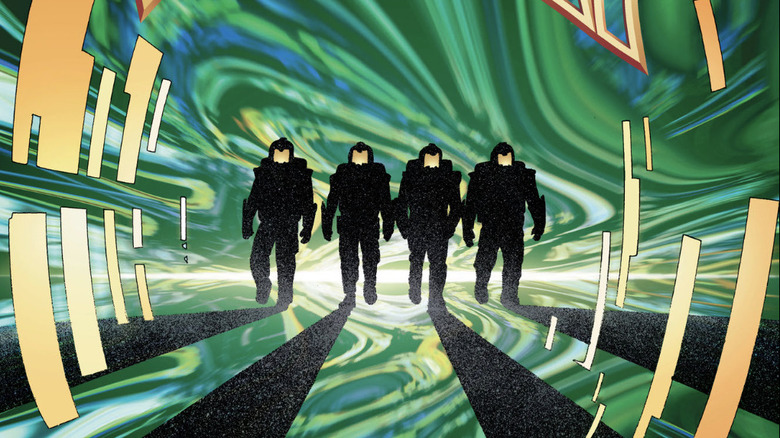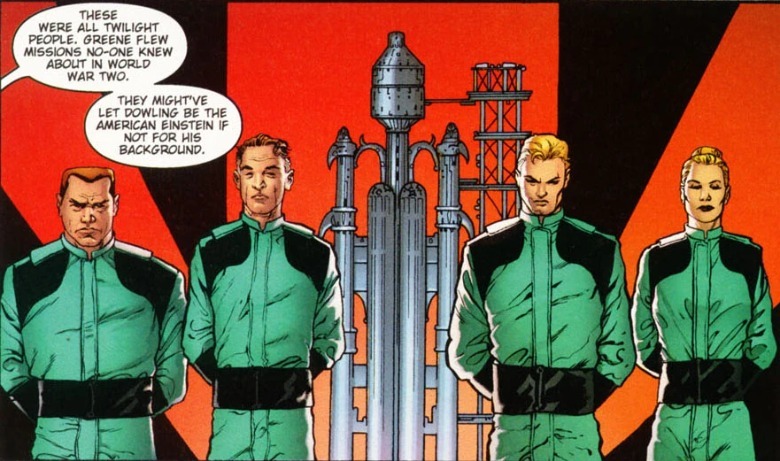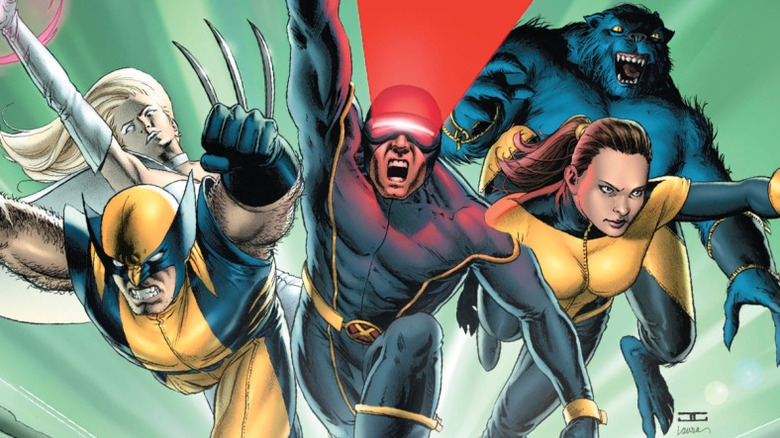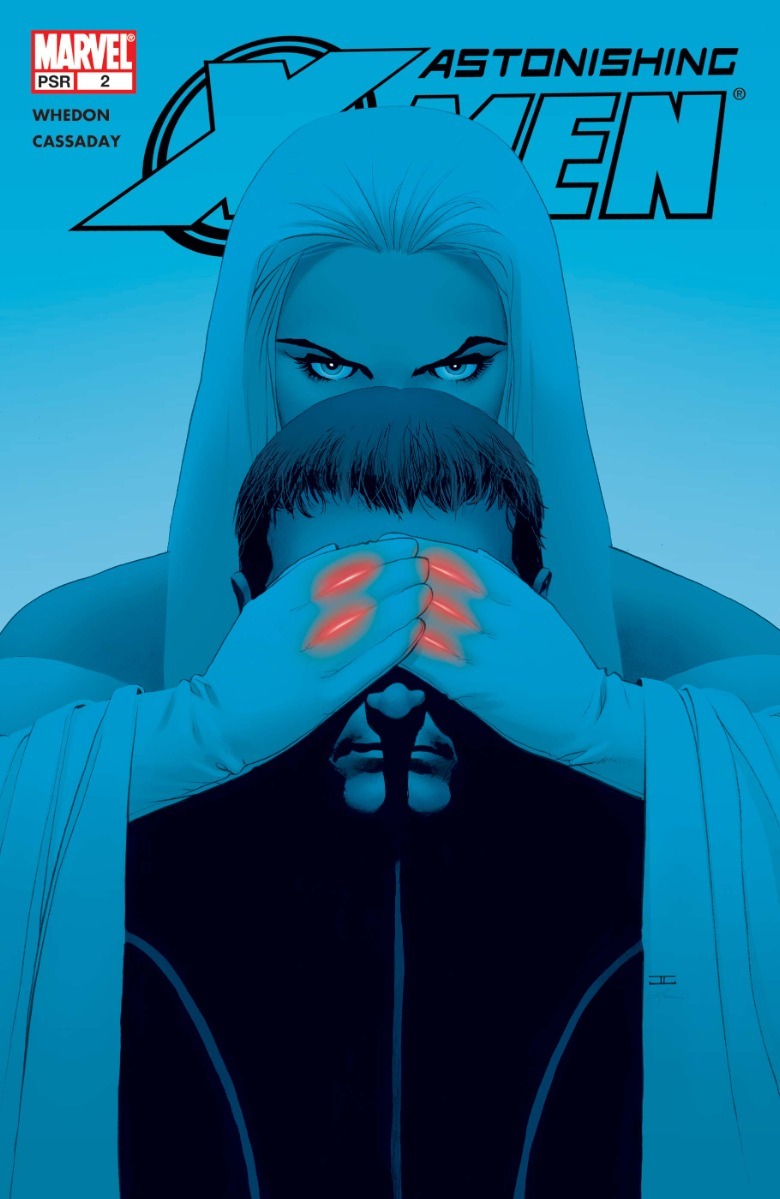This Classic Sci-Fi Comic Turned The Fantastic Four Into Villains
On September 9, 2024, Eisner Award winning comic artist John Cassaday passed away at the too-young age of 52. He was widely mourned by his industry peers and fans, who never worked with or met Cassaday, have lost any new fruits of his great talent. Before he became an artist, Cassaday studied film in college. Once you know that, his drawing style really clicks into place. Cassaday often drew huge images (both in wide and standard panels), the kind a movie screen demands, and his characters had detailed, photorealistic faces. It's no surprise he broke into comics during the mid-90s, when that style was taking off. If I could compare his work to a fellow artist, it would be Bryan Hitch ("The Ultimates," "The Authority").
Just as Hitch broke out working with writer Warren Ellis on "The Authority," Cassaday teamed with Ellis for the series "Planetary," published at WildStorm (a DC publishing imprint) from 1999 to 2009 across 27 issues. Reading "Planetary" from beginning to end, you can see Cassaday refine his skill from issue to issue as the style becomes more distinctive and the line-art more confident.
What is "Planetary"? It's a comic that could've only come into existence on the cusp of a new millennium, because it's premised on looking back at the previous one. 25 years later, it's a story that accurately rejected the '90s consensus that humanity had reached the end of its history and instead said there was still more exploring to do besides digging for artifacts.
Cassaday did plenty of work for Marvel Comics (his 24-issue run on "Astonishing X-Men" with Joss Whedon from 2004 to 2008 is quite beloved), but "Planetary" will go down at his best comic. Funnily enough, the book's main villains are modeled on Marvel's first fantastic family of four.
Planetary explores every piece of pulp the 20th century produced
The premise of "Planetary" is that all the pulp fiction of the 19th and 20th centuries — from science-fiction to fantasy, from Sir Arthur Conan Doyle to Jules Verne to Edgar Rice Burroughs to Bram Stoker — actually happened. The protagonists are Planetary, the name for three superpowered archaeologists: Elijah Snow (who can freeze people where they stand), the speedster Jakita Wagner, and super-hacker called The Drummer. With unlimited funds from a mysterious "Fourth Man," it's their job to record and document all the wild stories of days past.
"Planetary" builds up a mythology (without straining itself, thanks to its short run), but it functions like a spiritual anthology. Issue #2 is about Japanese Kaiju films, then issue #3 jumps to a John Woo-ish action story about a Hong Kong supercop. The comic doesn't just pay homage to these stories, but digs into the anxieties that were animating them.
Issue #7 of "Planetary" is about the "British Invasion" of comics in the 1980s, when writers like Alan Moore, Garth Ennis, Jamie Delano, and Neil Gaiman came over the pond to make dark and challenging comics. Naturally, Cassaday's cover is styled after Gaiman's "The Sandman."
Ellis, a Brit himself, concludes that his fellow comic writers had gone a bit nuts and cynical because Margaret Thatcher was PM. The subsequent eighth issue, about '50s monster movies like "Them!", says these creatures were the results of human experimentation. The U.S. government was filled with hardline anti-Communists in search of a weapon, but they only made monsters. These American monster flicks typically featured beings created by atomic testing; Americans were afraid of annihilation by the gadget their own government (via J. Robert Oppenheimer) first invented.
There's nothing fantastic about The Four in Planetary
You can't discuss 20th century pulp and leave out superhero comics. That's even more true today than it was in 1999; "Planetary" was ahead of the curve in satirizing the Marvelous house of ideas. (I'm sure it being published by the Distinguished Competition didn't hurt, but the series is not in a fanboy pissing contest, I promise.)
Issue #6 introduces Planetary's rivals in discovering the multiverse's mysteries. Known as the Four, they are astronauts who took a space flight in 1961 and walked away with incredible powers. Sound familiar?
The Four are led by mad scientist Randall Dowling, who has "a list of disciplines as long as your arm." (Though unlike Reed Richards, Dowling's powers are about controlling his mind, not his body's matter.) The other three are Jacob Greene (the ship's pilot who became a huge inhuman thing), William Leather (Dowling's chief enforcer, who can fly and shoot energy beams), and Dowling's lover Kim Süskind (who can turn invisible — since even light passes through her, she's blind).
None of the allusions in "Planetary" are subtle and even the most novice comic fan can tell the Four are supposed to be the Fantastic Four. To tie in real history, "Planetary" draws on how America's rocketry and space travel programs were largely spearheaded by Operation Paperclip recruits like Wernher Von Braun; Süskind is explicitly said to be the daughter of a high-ranking Nazi scientist.
The characters are, naturally, also used as a device to explore Marvel Comics' cultural impact. Issue #10, which follows parodies of Superman, Green Lantern, and Wonder Woman, has all three heroes murdered by the Four. A reflection of how, for a time, Stan Lee's Marvels left the more classical Justice League in the dust?
While both Planetary and the Four consider themselves explorers, the latter want to hoard the knowledge and secrets they uncover. They intend to keep the world as it is and have spent decades murdering to do so. Pretty similar to how Marvel Comics keeps an iron-gripped copyright on its characters, superseding the actual artists who created their cash cows, huh?
John Cassaday's comics are still worth reading
Since Cassaday's defining comics are and will forever be "Planetary" and "Astonishing X-Men," it's painful that his legacy runs the risk of being sullied by his collaborators. Since 2020, it's been revealed piece by piece that — since "Buffy the Vampire Slayer" all the way up to the reshoots on 2017's "Justice League" — Whedon had created several toxic workplaces, bullying actors and fellow writers. (Most infamously, he fired Charisma Carpenter from "Angel" after she became pregnant and "disrupted" his story plans.)
In 2020, it came to light that Ellis had a long history of manipulative behavior, using his celebrity within the industry to groom dozens of women (many of whom were trying to start a career in comics and saw Ellis as a mentor). Ellis' accusers reported in January 2023 that, even after meeting with him to discuss accountability, he didn't not take the steps they asked.
Cassaday's work is unfortunately intertwined with these two men. (He even directed an episode of Whedon's TV series "Dollhouse," titled "The Attic.") I can't blame people who can't get past Whedon and Ellis' involvement in these comics and so will never read them, but it's sad that Cassaday's essential art will always carry an asterisk through no fault of his own. I think this stands as a reminder that, as in film and television, no one person is responsible for a comic. Yes, Ellis and Whedon's writing of these two series is inextricable, but Cassaday's artwork is no less integral.
This is my favorite cover of "Astonishing X-Men," from the series' second issue.
The blocking is perfect, and the character detailing is so sparse even those parts feel like more negative space. The blue coloring is an instant moodsetter, especially because Cassaday drenches the entire image (not just the background) in the color. Cyclops' eye beams peek out even more so because it's like the red pushing against the force of the blue. While we can't see Scott's eyes, Emma Frost's icy gaze pierces ours. This isn't just a cool cover either, it's one that makes you ask questions about the story inside. Is Emma blinding Scott? Does she have a secret eeeevil plot? Or is she a voice of reason Scott needs to keep him from unleashing his worst self?
This cover is all Cassaday. Comics journalism/criticism's worst habit is treating the writer as the primary author of a comic and sometimes even neglecting to credit the artist. Cassaday's drawings speak for themselves about how important a role an artist plays in making a comic.
If you're still prepared to take the plunge: "Planetary" is available in four trade paperback volumes and a single hardcover omnibus edition. It can also be read on digital reading service DC Universe Infinite.
